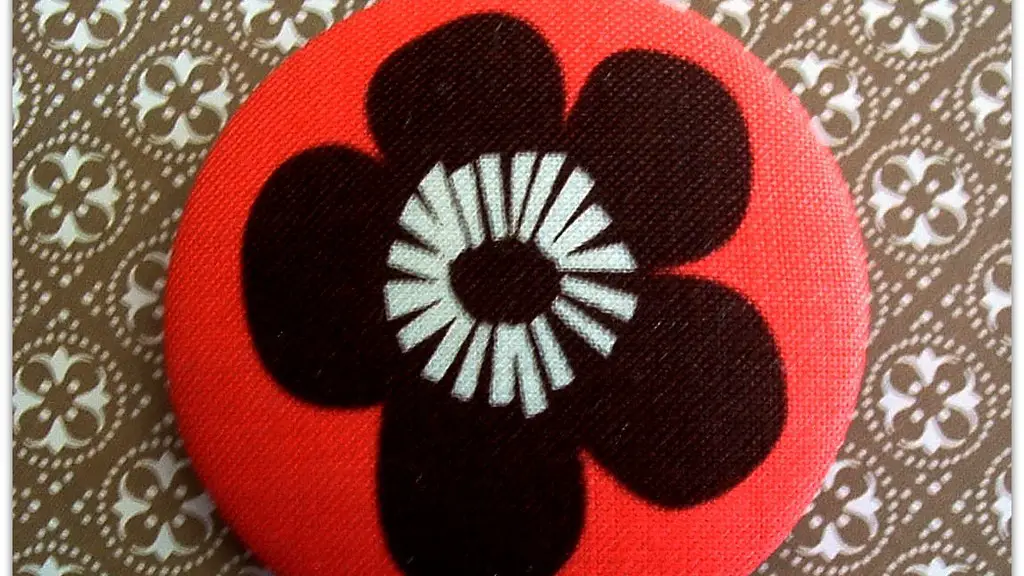1. Strip It Down
The first step in cleaning a vintage Singer sewing machine cabinet is to strip the painted surface down to its original wooden finish. To do this, use a stripping agent or a heat gun to lift off all layers of paint, lacquer, wax, and dust. Depending on the type of finish you find on the surface of the cabinet, you may need to work carefully and thoroughly to remove all traces of the finish. Depending on the size of the cabinet and the amount of coverage you need, the stripping agent or heat gun may take a few hours or more to complete the job.
2. Prep and Sand
Once the exterior of the cabinet has been stripped to its original finish, you can prepare the surface for repainting or polishing. Start by sanding the whole surface of the cabinet using medium to fine grade sandpaper. This will help smooth over any awkward or unfinished finishes. As you sand, keep an eye out for any additional layers of paint or wax that may have been left on the surface, and be sure to remove them before you progress to the next step.
3. Repaint or Polish
Depending on whether you’d like to give your vintage Singer sewing machine cabinet a more modern look, or a classic, antique finish, you can choose to either repaint or polish it. If you do decide to repaint the cabinet, first make sure to clean it thoroughly with a damp cloth and allow it to dry before you start painting. The best paint to use is a water-based acrylic product form any local home hardware store. If, on the other hand, you choose to polish the cabinet, use a soft cloth and a good quality wax-based furniture polish. Apply the furniture polish to the surface of the cabinet, and then buff it with a soft cloth in circular motions until you achieve an even, glossy finish.
4. Shield the Metal Parts
Once you’ve applied a coat of paint or wax to the cabinet, it’s important to take steps to protect it from potential damage. Use a metal paint protector or a metal polish to shield the exterior of the metal parts from corrosion and rust. Begin by first removing any existing dirt and grime from the metal parts with a metal cleaning cloth, and then apply the metal paint protector or metal polish over the metal surface. This will help keep the metal looking new, and protect it from further damage.
5. Shine Up the Hardware
After you’ve finished applying the protective solution to the metal components of the cabinet, it’s time to restore the old hardware. Start by undoing the screws and removing the hardware from the cabinet. Clean each piece carefully and thoroughly with a damp cloth, and then dry each piece before applying a suitable metal polish. The metal polish will help bring back the original shine of the hardware, and make it look good as new.
6. Repair any Damaged Parts
The last step in restoring your vintage Singer sewing machine cabinet is to repair any damaged parts. Start by inspecting the cabinet for any loose or broken parts, and then make a list of the ones you need to repair. Depending on the extent of the damage, you may need to use a combination of glue, screws, and other materials to repair the cabinet. If you’re not confident in repairing the cabinet yourself, you can contact a qualified furniture restorer to help you out.
7. Repurpose and Reuse
Once you’ve completed the steps listed above, you can make use of your repurposed vintage Singer sewing machine cabinet in any way you like. You can use it as a hobby desk, as a storage unit in your kitchen or in the garage, or even as a combination sewing and craft table. Whatever you decide to do with it, the newly repurposed cabinet will look great, and give you years of use.
8. Know the Value of Your Cabinet
Before you start restoring your vintage Singer sewing machine cabinet, it’s important to familiarize yourself with the value of the cabinet. Speak to an expert in vintage Singer cabinetry and they should be able to tell you the approximate value of your cabinet. This can help you to decide on a budget and set realistic expectations on the amount of time and money you will need to restore the cabinet to its original condition.
9. Research the Parts Available
When restoring any type of vintage furniture, it’s important to research the parts available to you. Speak to experts in vintage furniture restoration and look for parts that are still available. This can help you to make sure that you have the right parts when you start to restore your vintage Singer sewing machine cabinet. It can also help you to keep the cost of restoration to a minimum.
10. Restore Carefully and Thoughtfully
Before you start restoring your vintage Singer sewing machine cabinet it’s important to plan the restoration carefully and thoughtfully. Study the existing components, and consider the best way to restore the cabinet without compromising the overall look and integrity of the piece. Take your time and work patiently, and you should have a stunning result at the end of it.


